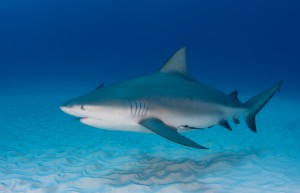I am calling this “Summer of Sharks” as if this summer is more of a problem than others are. In fact, it is not… no more, so than any other summer –so we could call any summer the “summer of sharks”.
“Shark Fever” is more correlated with when and how the press covers the topic. During summer, more people see sharks near shore – and this is unnerving. So are there more sharks? Are there more attacks? Do the unusually warm winter and Gulf waters cause the increase?

Let us start with the first question – are there more sharks in the Gulf than there used to be?
Though most of the papers I reviewed were published over 10 years ago – they suggest several species of sharks have actually been on the decline due to incidental catch in long line operations. This reduction due to by-catch suggest a need for population management. According to the NOAA Fisheries site, the quota for commercial sharks in the Eastern Gulf of Mexico for 2016 was 127.8 metric tons (amount varied by species). The actually percent of the quota landed was around 70%. In the Western Gulf during 2016, 350.4 metric tons were allowed and between 49 – 141% of the quota (depending on species) was logged by March of 2016; at which time those federal waters were closed to shark fishing. So far, in 2017 the Western Gulf is again closed due to quota already taken while the Eastern Gulf has reached between 30-40% of the quota.
These data suggest that the fishermen in the Western Gulf are either dealing with a lot of sharks and making the quota quickly or there is heavy fishing pressure on this population.
So why more coastal encounters?
Discussing the recent increase in contact between anglers and mako sharks near Pensacola, Dr. Wayne Bennett (University of West Florida) believes this is due to more divers/fishermen in the environment and thus more encounters; and not more makos interested in inshore waters. In other words, they have always been here – there are just more of us in the environment, and thus more of us seeing them. With Go-pros and cell phones, these encounters are moving through social media and more of us are aware of these encounters. Dr. George Burgess (University of Florida) has a similar comment about recent white shark encounters along the Gulf coast.
Are there more attacks?
To answer this – we review the International Shark Attack File housed at the Florida Museum of Natural History at the University of Florida.
According to the ISAF data – 2016 was “average”. 84 unprovoked shark attacks occurred worldwide in 2016; compared to the annual mean of 82. 2015 however was a busy year with 94 unprovoked attacks logged. ISAF goes on to state there is a correlation between the time humans spend in the sea and the number of attacks that occur. They go on to state that if shark populations remain the same or increase; you might expect an increase in attacks. However, if the populations were low or declining, you would expect a decrease in attacks.
ISAF has unprovoked shark attack data going back to 1580. During that time, the United States and Australia account for 67% of all attacks – but these are two nations where the citizens really love water sports. The U.S. alone accounts for 46% of all attacks. Within the U.S., Florida accounts for 58% of all shark attacks, followed by Hawaii, California, and the Carolina’s – all states where water sports are very popular.
Just because we are interested – in Florida, 54% of the attacks have occurred in Volusia (Daytona) and Brevard counties – both very popular with the surfing public. Along the Florida Panhandle, we have Bay County (Panama City Beach) with 9 attacks, Escambia (Pensacola Beach) with 6, Okaloosa (Destin) with 3, Gulf (Port St. Joe) and Franklin (St. George Island) both with 2, and finally Walton (Seaside), and Santa Rosa (Navarre) both with 1 attack each. This is a total of 24 attacks that equates to 3% of the total number of attacks in the state of Florida since 1580.

So what does all of this mean?
- There is concern about the decline of some shark populations due to either commercial catch or commercial by-catch. NOAA is trying to manage this.
- More people are encountering sharks, but this in not believed to be due to more sharks in the water – actually, because there are more people in the water.
- Shark attacks are rare, and in the panhandle – very rare.
Therefore, the sharks are here and it is fair to say that if tourism in the Panhandle continues to increase the number of human-shark encounters will as well. It will continue to be “the summer of sharks”.
Resources:
Sharks in the Gulf of Mexico: Facts
Shifting baselines and the decline of pelagic sharks in the Gulf of Mexico
http://onlinelibrary.wiley.com/doi/10.1111/j.1461-0248.2003.00564.x/full
Atlantic Shark Commercial Fishery Landings and Retention Limit Update from January 1 – December 31, 2016
http://www.nmfs.noaa.gov/sfa/hms/news/news_list/2017/1/shk_landings_update_011717.html.
ISAF 2016 Worldwide Shark Attack Summary
https://www.floridamuseum.ufl.edu/fish/isaf/worldwide-summary/
 0
0
